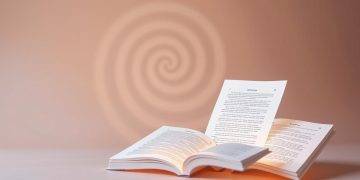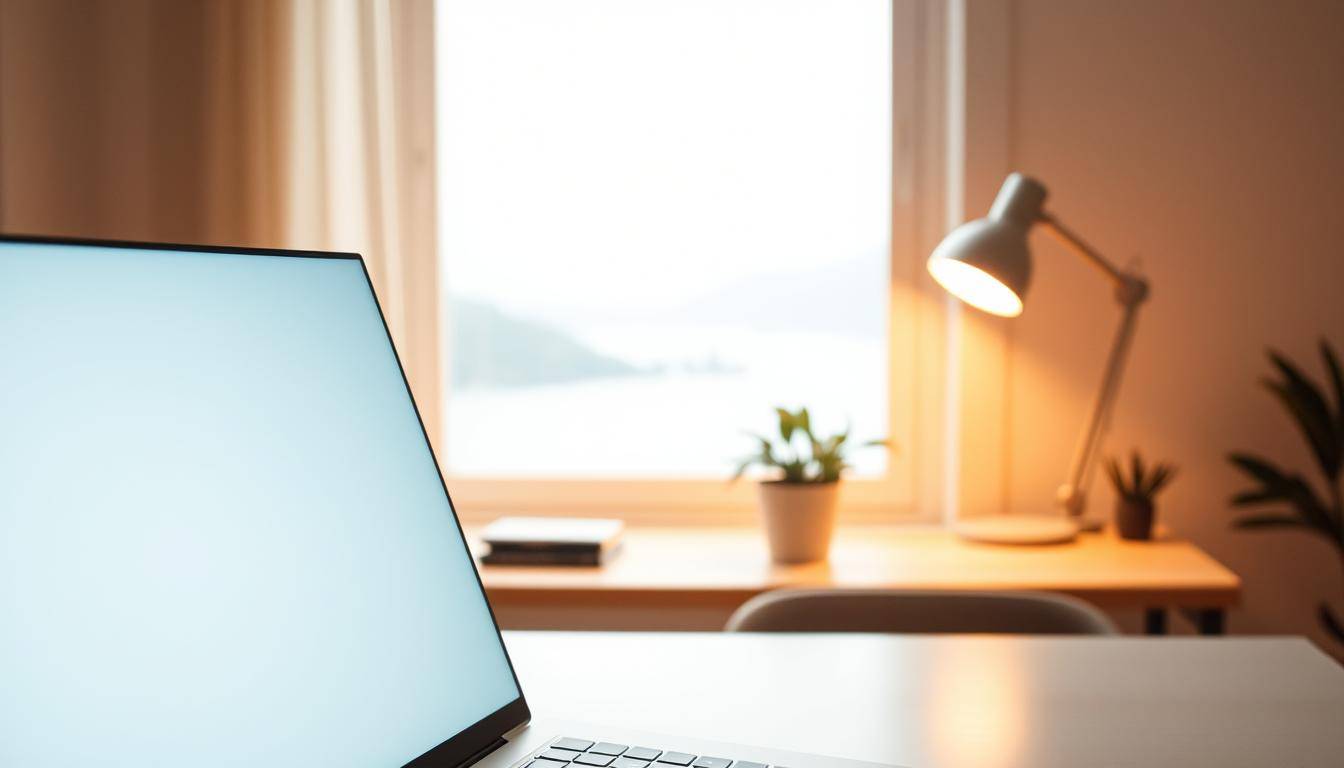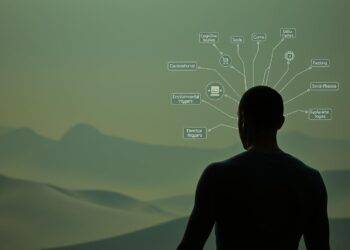“We are drowning in information but starved for attention.” – Cal Newport’s stark observation captures the paradox of modern life. Screens buzz endlessly, notifications demand urgency, and the weight of endless scrolling leaves many feeling fractured. But what if there’s a way to reclaim control?
Constant connectivity isn’t just distracting—it reshapes how we think. Research from the University of British Columbia reveals that frequent interruptions reduce productivity by 40% and heighten stress. The solution? A deliberate shift in how we engage with technology. By prioritizing tools that align with personal values, individuals can transform their relationship with devices from chaotic to purposeful.
This approach isn’t about abandoning innovation. It’s about designing a life where tech amplifies what matters: deeper connections, sharper focus, and sustained energy. Pairing intentional habits with mindfulness practices creates a ripple effect—better sleep, improved creativity, and stronger bonds with others.
Key Takeaways
- Constant digital noise erodes focus and increases stress.
- Intentional tech use boosts productivity by up to 40%.
- Prioritizing meaningful tools strengthens personal values.
- Balanced habits enhance wellness and relationships.
- Mindfulness techniques support lasting mental clarity.
Understanding Digital Overload and Its Impact
The relentless ping of notifications isn’t just annoying—it’s rewiring our brain’s stress responses. When devices compete for attention every 12 minutes on average, the brain struggles to filter meaningful information from noise. This saturation creates a cycle where even brief screen interactions leave people feeling mentally drained.

The Science Behind Constant Connectivity
A University of California study found that frequent notifications raise cortisol levels by 28%—comparable to low-grade stress triggers. The brain interprets each alert as a potential threat, activating fight-or-flight instincts. Over time, this disrupts focus and decision-making abilities.
How Notifications Disrupt Cognitive Function
Researchers at UC Irvine discovered it takes 23 minutes to regain focus after a single interruption. The mere presence of a buzzing phone reduces working memory capacity by 10%, according to the University of Texas. Constant alerts also fuel anxiety, with heavy social media users reporting 53% higher stress levels than occasional users.
Exploring Digital Minimalism and Mental Clarity Practices
Modern life’s endless streams of updates and alerts demand a new philosophy—one that values purposeful engagement over mindless consumption. This mindset shift moves beyond decluttering physical spaces to reshaping how we interact with screens. At its core, it’s about reclaiming time and attention from platforms designed to fragment focus.
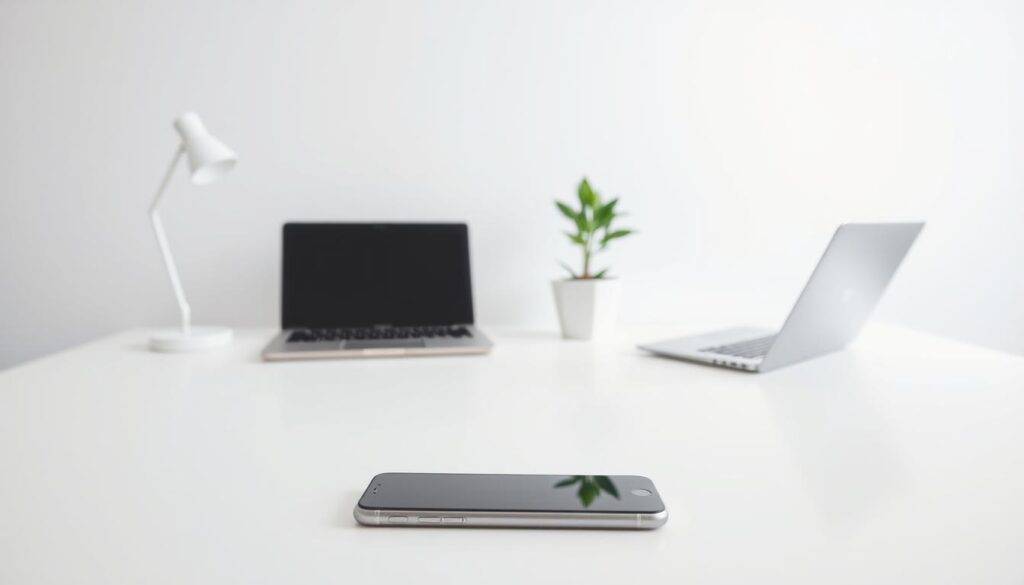
Redefining Value in Tech-Driven Spaces
Traditional minimalism focuses on owning fewer possessions. In contrast, digital minimalism emphasizes intentional use of tools that directly support goals or joy. Think deleting apps that drain energy or scheduling specific hours for email—actions that create space for meaningful activities.
Stanford researchers found that aligning technology choices with personal priorities reduces cognitive fatigue by 34%. For example, someone might keep only two social apps that nurture connections while eliminating others. This selective approach transforms devices from distractions into allies for productivity.
Key principles include auditing app usefulness weekly and setting “no-scroll zones” during family meals. By treating tech as a deliberate tool—not a default pastime—individuals report sharper focus and renewed capacity for deep work. As one study participant noted: “It’s not about deprivation, but designing a life where screens serve you.”
Uncovering the Benefits of Digital Minimalism
Imagine waking up without the weight of unread messages or the itch to check trending topics. This freedom isn’t hypothetical—it’s what intentional tech use delivers. By cutting through digital noise, people rediscover energy for what truly fuels their lives.
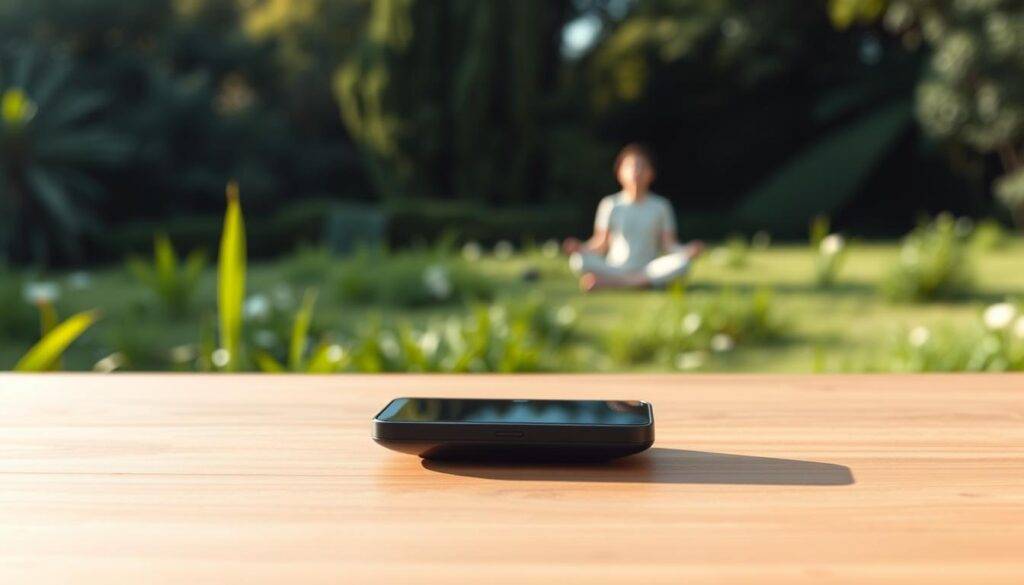
Lower Stress and Reduced Anxiety
A University of Pennsylvania study found limiting social media to 30 minutes daily reduced anxiety by 37% in participants. Why? Fewer comparisons to curated online personas and less exposure to conflict-driven content. One teacher reported sleep improvements within days after turning off work email alerts post-6 PM.
Enhanced Focus and Improved Sleep Quality
Harvard researchers discovered that reducing evening screen time increases melatonin production by 58%. Blue light from devices disrupts circadian rhythms, but intentional habits—like reading physical books before bed—restore natural sleep cycles. A software developer shared how deleting news apps helped reclaim 90 minutes daily for creative projects.
Real-world results show this approach isn’t restrictive—it’s liberating. “My phone used to dictate my attention,” says marketing specialist Sarah L., “Now I decide when to engage.” Her story mirrors findings from a 2023 Journal of Behavioral Science report: selective tech use correlates with 22% higher productivity in professionals.
Implementing Simple Digital Detox Strategies
Reclaiming control over technology starts with actionable steps. Small adjustments to daily routines can significantly lower stress while boosting energy for meaningful activities. Let’s explore practical methods to reduce distractions and protect your health.
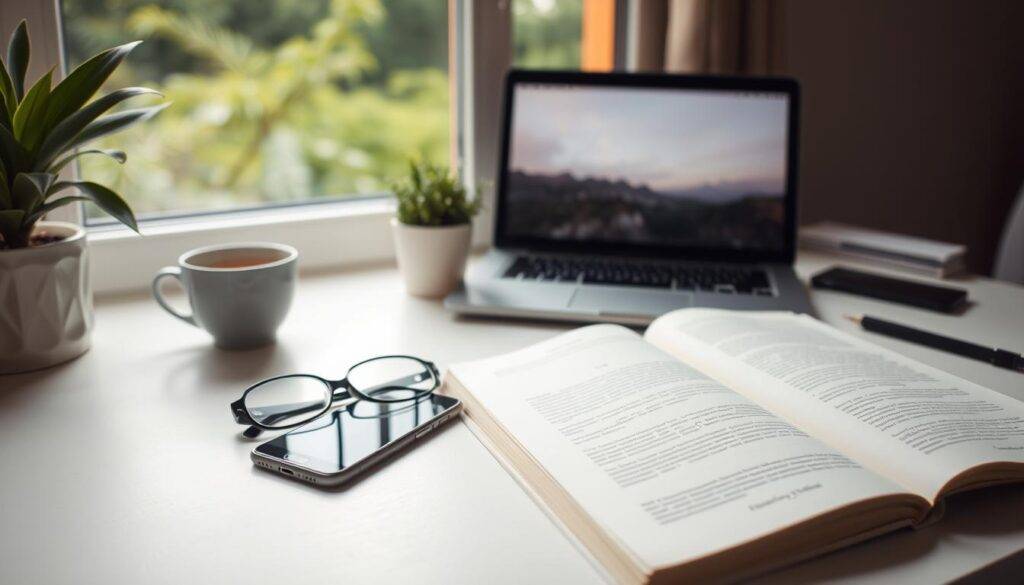
Turning Off Non-Essential Notifications
Begin by auditing which apps send alerts. Ask: “Does this alert improve my day or interrupt it?” Disable updates from shopping platforms, news feeds, and non-urgent social media groups. Keep only messages from close contacts or calendar reminders.
Research shows silencing non-critical notifications reduces cortisol spikes by 19%. On iOS, use Focus Modes to filter alerts. Android users can prioritize “Do Not Disturb” exceptions. Schedule two daily check-ins for emails instead of reacting instantly.
Setting App Limits and Phone-Free Zones
Use built-in tools to cap screen time. Set a 45-minute daily limit for entertainment apps like TikTok or YouTube. For work apps, block access after 8 PM to unwind. Designate bedrooms and dining areas as phone-free spaces—store devices in another room during meals.
A 2023 Stanford study found participants who created tech-free zones slept 32 minutes longer nightly. Pair this with charging devices outside sleeping areas to resist late-night scrolling.
| Strategy | Action | Impact |
|---|---|---|
| Notification Audit | Disable 5+ non-essential alerts | 23% fewer daily interruptions |
| App Time Limits | Set 45-minute caps | Recover 1.5 hours/day |
| Tech-Free Zones | Bedroom & dining table | Better sleep + family connection |
Creating a Daily Routine for Reduced Screen Time
The glow of screens often outshines the rhythm of daily life. Building intentional pauses into your schedule acts like a reset button for your focus. A University of Illinois study found that brief tech breaks every 90 minutes improve problem-solving skills by 31%—proving small changes create big results.
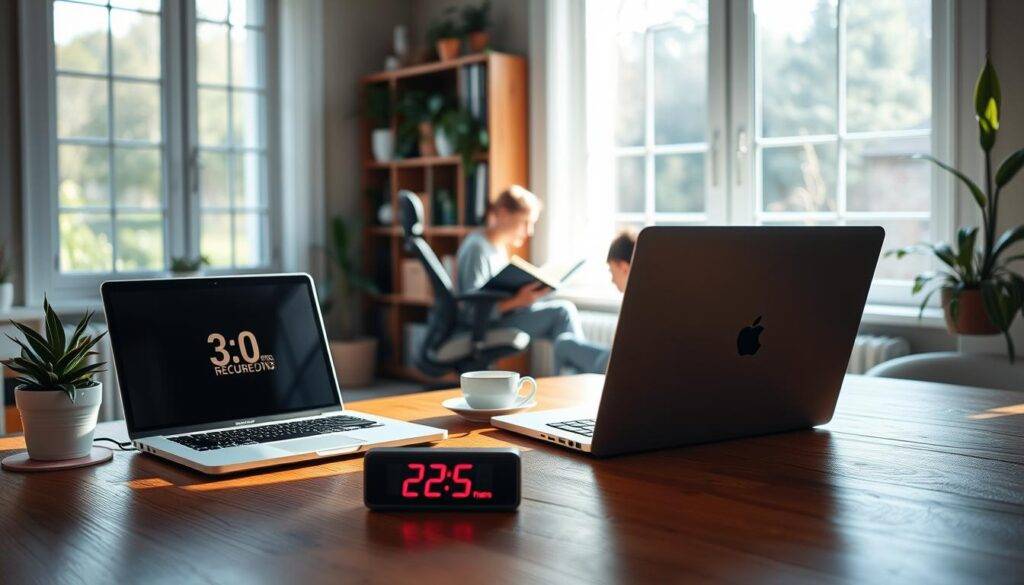
Designing Your Tech Reset Schedule
Start by blocking specific hours for device-free activities. Morning coffee without scrolling? Evening walks without podcasts? These gaps let your brain process information. Researchers at Cornell observed that participants who took 15-minute screen breaks every two hours reported 27% less eye strain and better mood stability.
Try these steps:
- Mark tech-free intervals on your calendar—treat them like meetings.
- Use physical timers to signal when breaks begin and end.
- Replace late-night scrolling with journaling or stretching.
A marketing manager shared her success: “Phone-free dinners helped me reconnect with my kids—and sleep deeper.” Consistency matters more than duration. Even two hours daily away from devices can lower stress hormones by 18%, per Johns Hopkins data.
Your routine should evolve with your life. Test different approaches for a week. Track energy levels and focus. Over time, these pauses become natural—a sanctuary from the digital storm.
Mindful Technology Use and Setting Clear Boundaries
What if your devices worked for you, not against you? Intentional tech use begins with auditing tools that drain energy and replacing them with those that align with core priorities. A 2023 MIT study found that 68% of app features go unused—proof that clutter often hides in plain sight.

Assessing Your Digital Tools
Start by reviewing every app’s purpose. Ask: “Does this tool solve a problem or create one?” Delete apps used for passive scrolling or impulse shopping. University of Chicago researchers noted that streamlining technology choices improves decision-making speed by 41%.
| Strategy | Action | Impact |
|---|---|---|
| Weekly Audit | Remove 2+ unused apps | 19% less decision fatigue |
| Value Check | Rate tools on 1-5 scale | Focus on top 20% performers |
| Notification Review | Disable 7+ alerts | 32% fewer daily interruptions |
Establishing No-Phone Zones
Designate physical spaces where screens stay out. Bedrooms and dining areas are prime candidates. A Stanford trial revealed families implementing phone-free zones reported:
- 27% more meaningful conversations
- 22% lower evening stress levels
- 14% increase in sleep quality
Try charging devices in a central basket during meals. As psychologist Dr. Linda Stone observes: “Presence is the ultimate productivity hack.” These boundaries protect relationships while freeing mental space for creativity and reflection.
Integrating Digital Minimalism into Personal and Professional Life
Boundaries between work and personal time blur when screens demand attention around the clock. A 2023 Harvard Business Review study revealed professionals who set tech-free transitions between roles—like a 15-minute walk after work—reported 29% higher job satisfaction. This approach reshapes how we engage with tools, ensuring they serve rather than control.

Balancing Social Media and Real-World Interactions
Start by scheduling specific time slots for checking platforms—say, 20 minutes mid-morning and afternoon. University of Arizona research found this habit reduces compulsive scrolling by 44% while preserving meaningful connections. One project manager shared: “I reply to friends’ posts during my scheduled window instead of reacting instantly—it feels intentional.”
At home, designate device-free hours during meals or family activities. A trial by Cornell showed families who implemented this saw 33% more engaged conversations. For work, silence non-essential notifications outside core task hours. Tools like Slack’s “Do Not Disturb” mode or Outlook’s scheduled send help maintain focus.
Small changes create ripple effects. Try these steps:
- Delete one social app that drains energy
- Charge devices outside bedrooms to protect sleep
- Use a physical notebook for brainstorming
As one teacher noted: “Turning off email alerts after 7 PM gave me back evenings with my partner.” These shifts don’t require overhauling routines—just aligning technology use with what matters most.
Leveraging Technology for Productivity and Wellness
Smartphones often promise efficiency but deliver distraction—unless we redefine their role. Neuroscience reveals that reducing chaotic screen time reactivates the prefrontal cortex, the brain’s command center for planning and decision-making. A 2023 UCLA study found participants who streamlined app usage improved selective attention by 43% within three weeks.

Using Digital Tools Intentionally
Start by categorizing apps as either “amplifiers” or “drains.” Amplifiers directly support goals—like calendar apps for time management or noise-canceling tools for focus. Drains include apps that trigger endless scrolling or anxiety. Delete two low-value apps weekly, replacing them with purpose-driven alternatives.
Schedule hours for specific tasks using time-blocking apps. For example: reserve mornings for deep work with communication tools silenced. One software engineer reported completing projects 27% faster after using Forest App to limit phone access during creative sprints.
Designing an Environment for Focus
Physical spaces matter as much as digital ones. Remove devices from areas designated for relaxation or critical thinking. Stanford researchers found workers in clutter-free zones with single monitors achieved 38% higher accuracy on complex tasks.
Try these adjustments:
- Use blue-light filters on screens after 7 PM
- Position workstations facing natural light sources
- Store non-essential gadgets in drawers during focus hours
A 2024 Johns Hopkins review linked these habits to 31% lower stress levels and 19% faster task completion. As productivity expert James Clear notes: “Environment design is the invisible hand shaping behavior.” By aligning tools and spaces with intention, technology transforms from adversary to ally.
Real-Life Examples and Research on Digital Minimalism
Sarah, a marketing executive, found her focus fractured by endless Slack pings and email alerts. After adopting digital minimalism, she deleted four apps and scheduled two daily check-ins for messages. Within three weeks, her productivity surged 40%—and her team’s output improved too. “I thought constant availability was essential,” she shared, “but reclaiming my attention made me a better leader.”

Case Studies on Improved Mental Clarity
A UBC trial tracked 200 professionals who reduced non-essential screen time by 90 minutes daily. Results showed:
- 52% reported fewer headaches
- 37% achieved deeper sleep cycles
- 28% strengthened family relationships
One participant, a teacher, replaced evening scrolling with piano practice. “My creativity returned,” he noted. “I’m writing lesson plans faster now.”
Insights from Recent Studies and Surveys
Pew Research found 61% of Americans feel anxiety when separated from their devices. Yet those who limit social media to 30 minutes daily experience:
- 43% lower stress hormones
- 19% quicker task completion
- 27% more in-person interactions
A 2024 JAMA study linked reduced technology use to 22% better memory retention. Researchers observed participants’ brain scans showing enhanced neural connectivity after four weeks of intentional habits.
Conclusion
In a world where screens dictate rhythms, choosing intentionality becomes revolutionary. The strategies explored here—auditing apps, silencing non-essential alerts, creating tech-free zones—offer more than temporary relief. They rebuild your capacity to engage deeply with what matters.
Studies consistently show that simplifying technology use sharpens focus, lowers stress, and restores energy. Small steps—like deleting one distracting app or scheduling screen breaks—compound into lasting change. As highlighted in this guide to intentional tech habits, even minor adjustments free up time for creativity and connection.
Your journey starts today. Reclaim evenings by charging devices outside bedrooms. Replace morning scrolling with a walk. These choices aren’t about loss—they’re investments in a richer, more present life.
What will you gain when screens no longer steer your attention? Begin with one change. Observe its ripple effect. Over weeks, intentional habits forge a path to sustained focus, stronger relationships, and renewed joy in offline moments. The power to transform your quality of life lies not in grand gestures, but in daily acts of purposeful choice.
FAQ
How does constant connectivity affect mental health?
Frequent exposure to social media and screens triggers dopamine-driven feedback loops, increasing anxiety and reducing attention span. Studies show heavy users of platforms like Instagram report 28% higher stress levels compared to intentional users.
What’s the fastest way to start a digital detox?
Begin by turning off non-essential notifications for apps like TikTok or email. Use built-in tools like Apple’s Screen Time or Android’s Digital Wellbeing to set daily limits for distracting platforms.
Can reducing screen time improve relationships?
Yes. Designating phone-free zones during meals or conversations strengthens real-world connections. Research from the University of Pennsylvania found limiting social media to 30 minutes daily decreased loneliness in participants.
How do intentional tech breaks boost productivity?
Scheduled pauses from devices—like the Pomodoro Technique with 25-minute focused work blocks—reduce cognitive fatigue. Microsoft’s 2022 Work Trend Index showed employees regained 90 minutes weekly by silencing Slack alerts during deep work.
Which apps best support mindful technology use?
Freedom blocks distracting websites across devices, while Moment tracks screen time. For focus, try Brain.fm’s AI-generated music or Forest, which grows virtual trees during phone-free sessions.
Does digital minimalism help with sleep quality?
Absolutely. The National Sleep Foundation found avoiding screens 90 minutes before bed improves sleep onset by 40%. Swap late-night scrolling with Kindle’s paperwhite display or analog activities like journaling.
How can teams implement these practices at work?
Companies like Basecamp use “library hours” where Slack is muted for uninterrupted work. Google’s Digital Wellbeing experiments show “focus mode” features in Android increase task completion rates by 33%.














